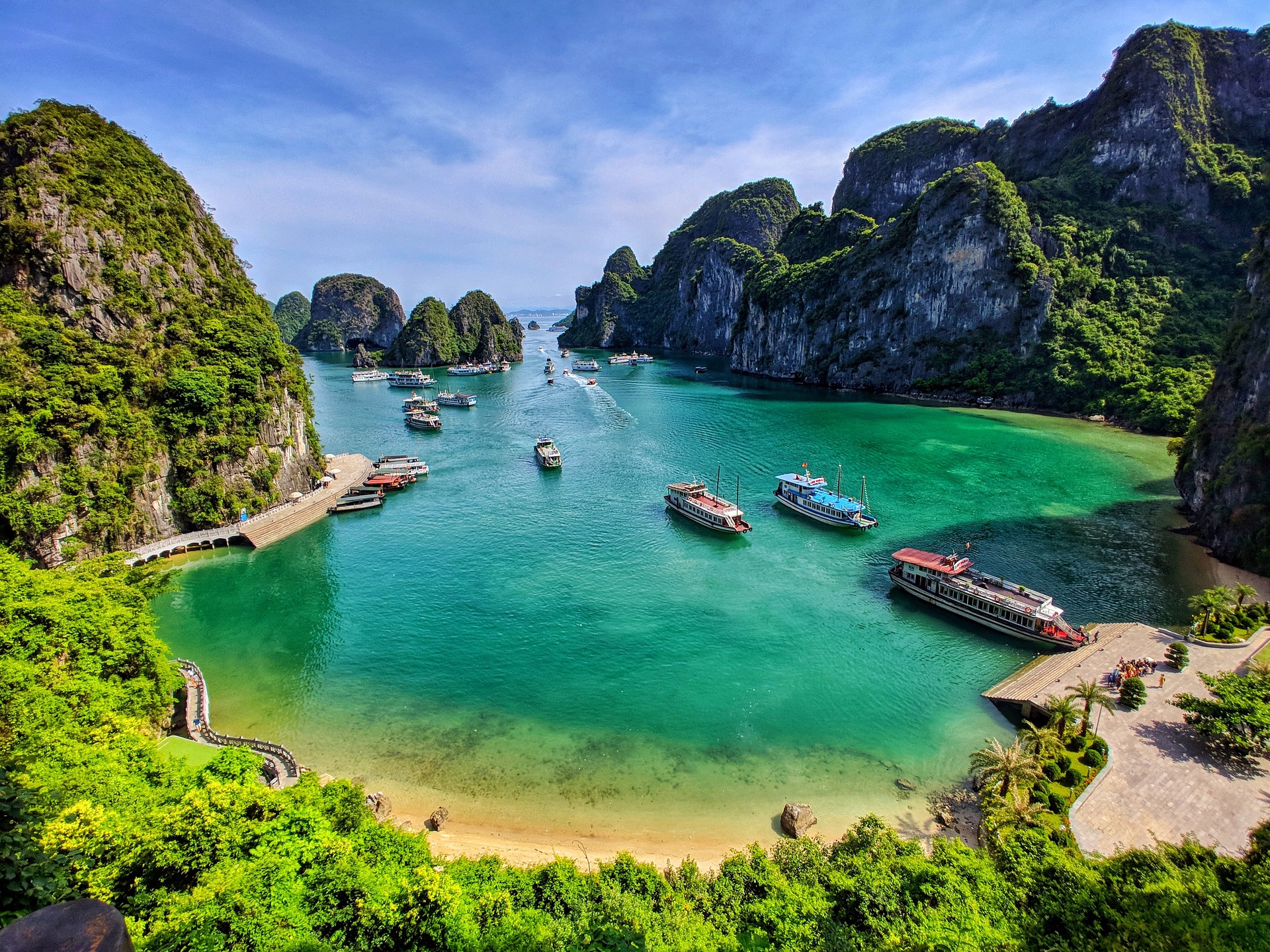Ah, Vietnam! A realm of enchanting landscapes, bustling cities, tantalizing cuisine, and a culture steeped in history. This Southeast Asian gem stretches over 1,650 km from North to South, a topographic diversity that harbors climatic subtleties often surprising to the first-time visitor. From misty mountains to sun-kissed beaches, the beauty of Vietnam is undeniable. But knowing the best (and worst) times to explore this captivating land can make your journey an unforgettable adventure rather than a holiday hiccup. So, backpack strapped and passport in hand, let’s unravel the mystery of Vietnam’s seasons, ensuring you get the most out of your expedition, whether you’re after great weather, low prices, or a bit of both.
When is the best time to visit Vietnam?
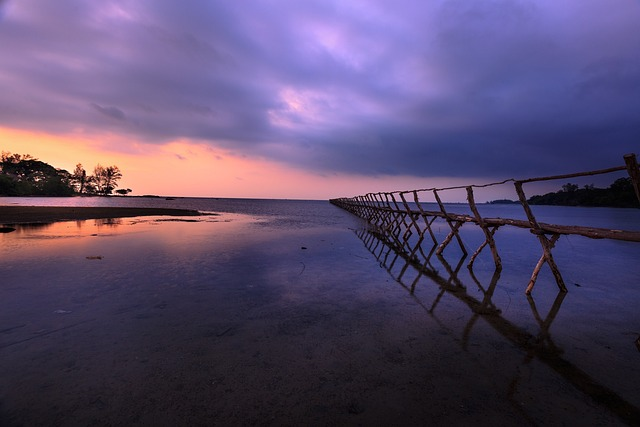
The best time to visit Vietnam largely depends on what you want to experience. Blessed with a complex geography that has different climatic zones, Vietnam doesn’t have a one-size-fits-all “best time” to visit.
However, if we’re talking about generally favorable weather conditions, the spring months from February to April and the autumn months from August to October are typically considered the best times to visit. During these periods, rainfall is lighter, and temperatures are more moderate throughout the country. The spring season often coincides with Tết (Vietnamese New Year), offering a unique insight into local traditions and festivities.
When is the worst time to visit Vietnam?
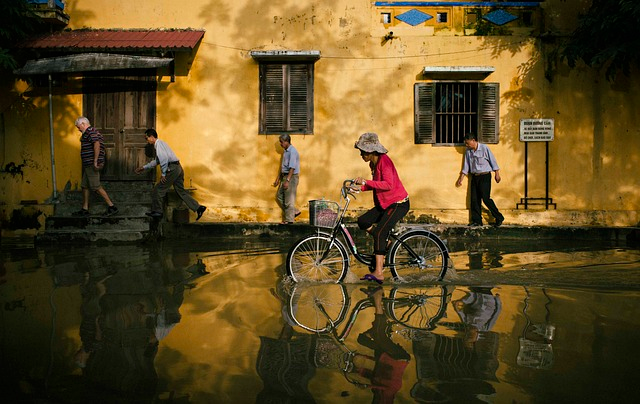
Just as Vietnam doesn’t have a universally “best” time to visit, the “worst” time to visit can also be subjective. However, if we consider the typical pitfalls a traveler might want to avoid, such as heavy rainfall, extreme temperatures, or peak tourist season, there are a few times you might want to think twice about.
The peak of summer, from June to August, can be exceptionally hot, particularly in the cities like Hanoi and Ho Chi Minh City. The humidity can be intense, and you might find yourself more exhausted from sightseeing than you’d prefer.
On the other hand, the monsoon season, which typically lasts from May to October in the south and from October to April in the north, can sometimes disrupt travel plans. Heavy rains can lead to flooding in some areas, making travel difficult, and some activities, like trekking or beach-going, less enjoyable.
Remember, though, that “worst” is subjective. For some, the rainy season brings an element of romance to Vietnam’s landscape, and the summer heat is a small price to pay for vibrant city life and lush, green landscapes. Your adventure in Vietnam awaits, and every season holds its own charm. The question is, which will you choose to experience?
When to visit Northern Vietnam (Sapa, Hanoi, Halong Bay)
Venturing into the northern Vietnam, you’re stepping into a world of breathtaking highlands, captivating capital city life, and ethereal bay landscapes. The region has a distinctive seasonal pattern which can have a profound impact on your travel experience.
Best Time to Visit Sapa
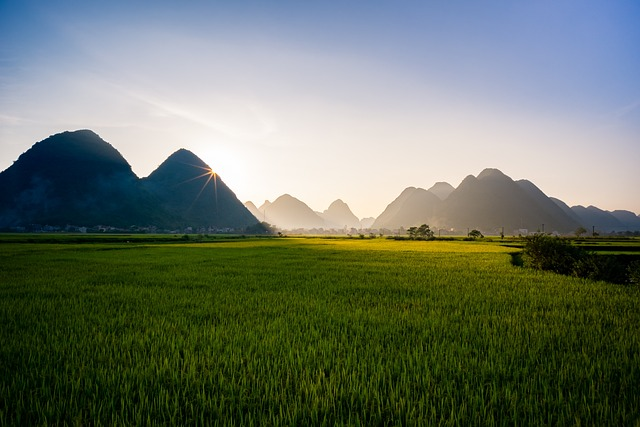
If Sapa, with its staggering rice terraces and lush mountain trails, is on your itinerary, the best times to visit are between March to May and September to November. These periods offer temperate weather and lower rainfall, perfect for hiking and capturing those panoramic views.
Best Time to Visit Hanoi
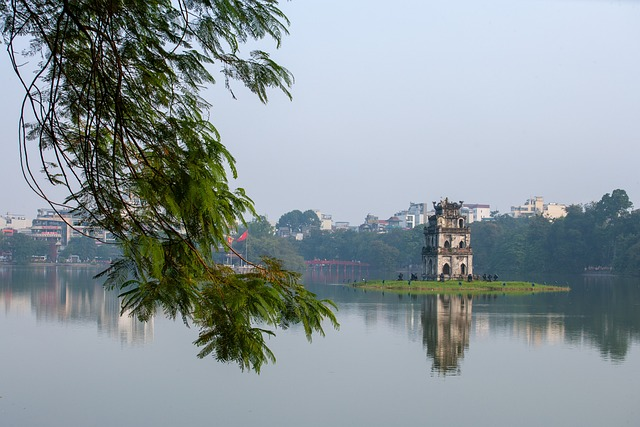
Hanoi, the bustling capital, teems with life and culture year-round. However, its subtropical climate sees hot, humid summers and cool, dry winters. Spring (February to April) and Autumn (October and November) are the most pleasant seasons to explore this charming city.
Best Time to Visit Halong Bay
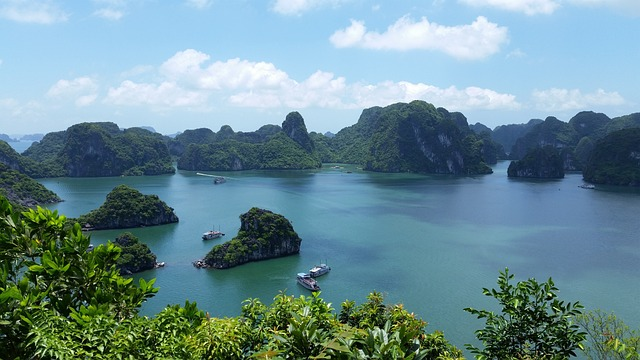
For Halong Bay, a UNESCO World Heritage site of towering limestone islands, the periods from March to June and October to December are ideal. These times offer calmer waters and clearer skies, making your cruise through the bay a memorable experience.
Best Time to Visit Ninh Binh
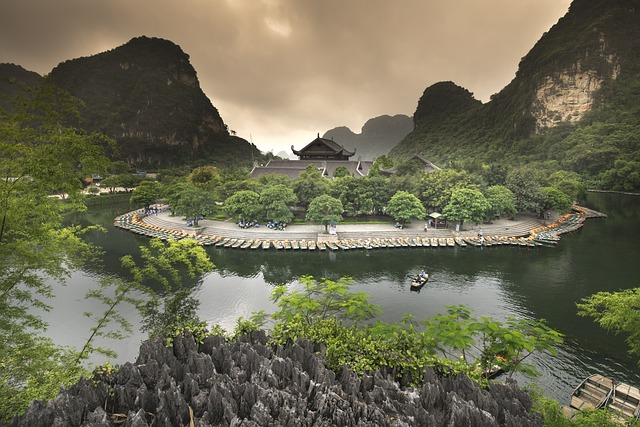
Ninh Binh, often referred to as “Halong Bay on land,” is famous for its stunning karst landscapes and tranquil river scenes. The best time to visit Ninh Binh is in the late spring from April to June. During this period, the weather is typically warm and dry, and the rice fields are a lush, vibrant green, providing a picturesque backdrop for your adventures.
Another excellent time to visit is in the autumn months from September to November. The weather is generally pleasant during this time, with cooler temperatures and less rainfall than the summer months.
Best Time to Visit Hà Giang
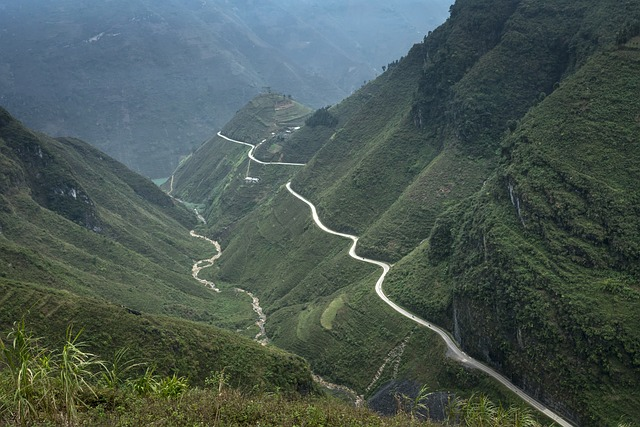
Hà Giang, known for its breathtaking mountainous landscapes and colorful ethnic culture, is a highlight of North Vietnam. The best time to visit Hà Giang largely depends on what you want to see.
For those looking to see the spectacular bloom of Tam Giác Mạch, or buckwheat flowers, late October to early December is the perfect time. The region transforms into a sea of pink and white flowers, creating a truly mesmerizing sight.
If you wish to see the lush greenery of the terraced fields, then the months from May to July, when the farmers start to flood the fields in preparation for a new crop, would be ideal. The combination of the emerald green fields under the clear blue skies is a sight to behold.
However, be mindful of the rainy season (July to September), as the region can experience heavy rainfall that may cause landslides and make road conditions challenging, particularly if you’re planning a motorbike trip.
Worst Time to Visit Northern Vietnam
While North Vietnam is a year-round destination, the winter months from December to February can be particularly challenging for some travelers. The region, especially around Hanoi and Sapa, experiences cooler temperatures, with lows sometimes reaching 10°C (50°F) or even less in the mountainous areas. This can be a stark contrast to the tropical heat found elsewhere in the country.
Moreover, the winter months can bring a persistent mist in areas like Hanoi and Halong Bay, which might obscure the otherwise stunning views. It’s also worth noting that Sapa and other northern highland areas can see occasional frost and even snow during this period, which can disrupt hiking and other outdoor activities.
When to visit Central Vietnam (Hue, Hoi An)
Central Vietnam is home to the ancient imperial city of Huế and the picturesque town of Hội An. Its climate is transitional, with characteristics of both the north and the south. This region has a hot and dry season from January to August and a rainy season from September to December.
Best Time to Visit Huế
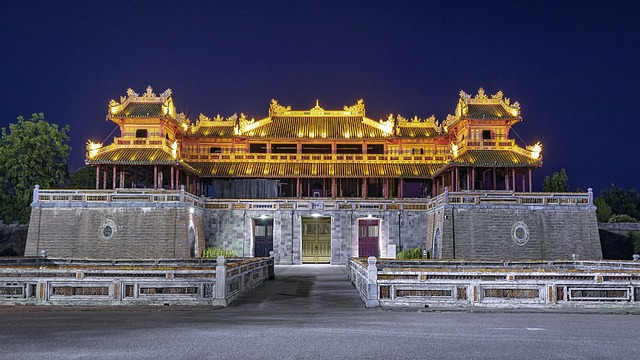
Huế, known for its historic citadel and serene pagodas, is best visited from January to August when rainfall is minimal, and temperatures are warm but bearable.
Best Time to Visit Hội An

Hội An, with its well-preserved Ancient Town, lantern-lit streets, and tranquil beaches, is delightful from February to July. During these months, you’ll enjoy warm temperatures and lesser rainfall, ideal for exploring the town or lazing on An Bang Beach.
Worst Time to Visit Central Vietnam
The worst time to visit Central Vietnam, particularly in areas like Hue and Hoi An, is generally during the rainy season from September to December. During this time, the region can experience significant rainfall, which can result in flooding and typhoons, especially in October and November.
These weather conditions can disrupt travel plans, and some attractions may close due to the weather. It’s also worth noting that while beaches in this region are beautiful, they may not be as enjoyable during these rainy months.
When to visit Southern Vietnam (Ho Chi Minh City, Mekong Delta)
South Vietnam, with the dynamic Ho Chi Minh City and the lush Mekong Delta, boasts a tropical climate with a wet and a dry season. The dry season, from November to April, is the best time to visit this region.
Best time to Visit Ho Chi Minh City
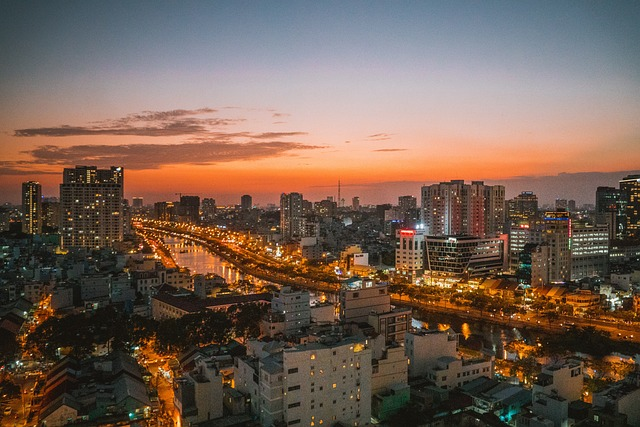
Ho Chi Minh City, formerly known as Saigon, is a vibrant metropolis with a mix of modern skyscrapers and classic French architecture. The city is hot year-round, but the cooler, drier months from December to March make for a more comfortable urban exploration.
Best time to Visit the Mekong Delta
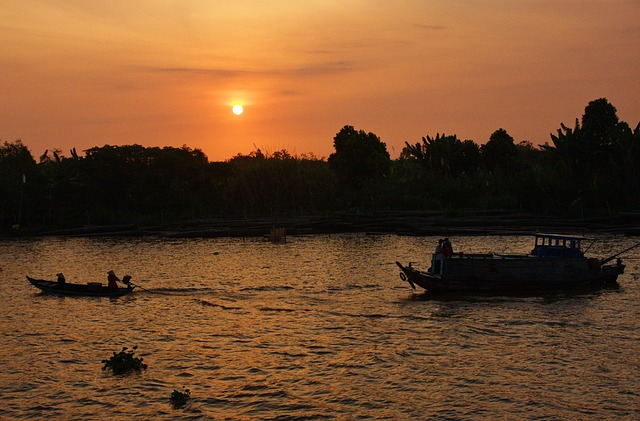
The Mekong Delta, characterized by its vast rice paddies, fruit orchards, and bustling floating markets, is best visited from November to April when rainfall is lowest. This period allows you to fully experience the vibrant life along the river without the inconvenience of heavy rains.
Remember, the “best time” can often depend on what you’re looking for in your travel experience. Whether it’s trekking through the terraced fields of Sapa, exploring the historic sites of Huế, or navigating the waterways of the Mekong Delta, each region of Vietnam offers its own unique charm in every season.
Best time to Visit Southern Islands
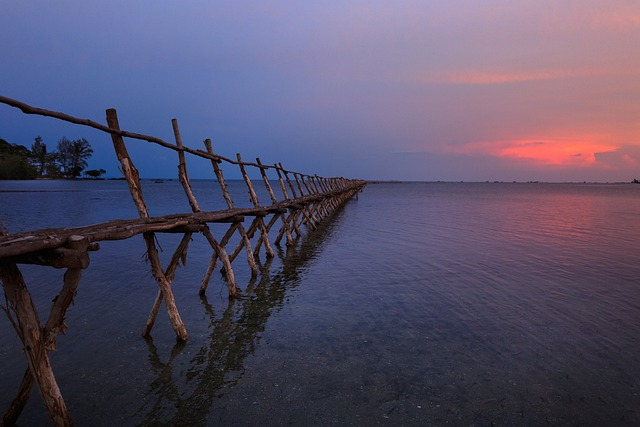
Vietnam’s southern islands are known for their stunning beaches, crystal-clear waters, and abundant marine life. Here’s a guide to the best times to visit some of these islands:
Phú Quốc: As the largest island in Vietnam, Phú Quốc boasts beautiful sandy beaches and lush national parks. The best time to visit Phú Quốc is during the dry season from November to March. During this period, the weather is sunny and the sea is calm, making it perfect for beach activities and water sports.
Côn Đảo Islands: The Côn Đảo Islands are a group of 16 islands, each offering pristine beaches and rich wildlife. The best time to visit the Côn Đảo Islands is during the dry season from November to February. This period provides ideal conditions for diving, with clear waters and abundant marine life.
Phú Quý Island: Phú Quý Island is a less-visited gem with beautiful beaches and a tranquil atmosphere. The best time to visit Phú Quý is during the dry and cool season from December to June. The sea during this time is calm, making it great for activities like swimming, snorkeling, and boating.
Worst time to Visit Southern Vietnam
In Southern Vietnam, the months from May to October constitute the rainy season. During this time, cities like Ho Chi Minh City and the Mekong Delta region can experience heavy, albeit usually brief, afternoon downpours. Flooding can occur, especially in Ho Chi Minh City’s more congested areas.
While these showers often don’t last long, they can disrupt day tours and make travel slower. The humidity during these months can also be quite high, which might be uncomfortable for some travelers. However, the landscape is exceptionally lush and green during this time, which can be a plus for nature lovers.
Low Season (September-October)
The period from September to October is often considered the low season in Vietnam. During these months, you’ll find fewer tourists, lower prices for accommodations and services, and a more relaxed pace of life. This is especially true in popular tourist destinations like Hoi An, Halong Bay, and Ho Chi Minh City.
The low season coincides with the rainy season in much of the country, so be prepared for some showers. However, the rains often come in short, intense bursts, leaving plenty of time for exploration in between. In fact, the rain can even enhance the beauty of the landscapes, providing a fresh, verdant look to the rice fields and mountains.
Traveling during the low season also means contributing to a more sustainable tourism model, where resources are spread more evenly throughout the year. So, you can enjoy your journey knowing you’re having a lighter impact on the local environment and economy.
High Season (June-July)
As the temperatures rise, so does tourist activity in Vietnam. June and July mark the high season, with travelers from all corners of the world flocking to Vietnam’s cities, beaches, and historical sites. The weather during these months tends to be hot and humid, but it doesn’t deter the enthusiastic explorers seeking to soak in Vietnam’s diverse culture and stunning landscapes.
During the high season, popular attractions like the War Remnants Museum in Ho Chi Minh City or the Imperial Citadel in Hue can get crowded, and prices for accommodations can surge. But, with some smart planning and early reservations, you can navigate the high season like a pro.
Remember, the vibrancy and energy during the high season can be infectious. Festivals, markets, and cafes buzz with activity, and the nightlife in major cities is at its peak. The high season also offers some fantastic opportunities for socializing and meeting fellow travelers from around the world.
Rain Season (monsoon season)
Vietnam’s monsoon season varies depending on the region. In the north, the rainy season typically lasts from May to October, while in the south, it extends from May to November. This period is characterized by frequent, heavy rainfall, high humidity, and, in some regions, potential flooding.
While the monsoon season might sound daunting, it’s not all doom and gloom. In fact, this season can be a beautiful time to visit Vietnam. The rain breathes life into the lush landscapes, and the countryside explodes with a rich, green vibrancy. The air after a monsoon shower is fresh and crisp, and there’s a certain tranquility to be found in watching the rain fall over the city streets or rural landscapes.
However, if your travel itinerary involves a lot of outdoor activities, such as trekking, beach activities, or cruising, the monsoon season might pose some challenges. Heavy rains can lead to cancellations or delays in these activities. But with a flexible itinerary and a positive attitude, you can turn the unpredictable weather into a memorable part of your Vietnam adventure.
Holidays in Vietnam
Vietnam is a country rich in traditions and cultural celebrations. Traveling during these special occasions can provide a unique insight into the country’s heritage, customs, and community spirit. However, it’s important to note that public holidays can also impact travel plans, with closures of government offices, banks, and some businesses, as well as busy transportation due to locals traveling. Let’s delve into some of the major holidays and their impact on your travel.
Tet Nguyen Dan (late January or early February)
Tết Nguyên Đán, or simply Tết, is the most important celebration in Vietnamese culture, marking the Lunar New Year. Families come together for reunion dinners, cities and homes are adorned with colorful decorations, and traditional foods like bánh chưng (sticky rice cake) are prepared.
Traveling during Tết can be both fascinating and challenging. Many shops, restaurants, and attractions may close for several days. On the other hand, the festive atmosphere, vibrant parades, and firework displays can be a captivating experience. If you’re planning to travel during Tết, book your accommodations and transport well in advance, as this is a popular time for locals to travel as well.
National Day (September 2nd)
National Day is a public holiday in Vietnam commemorating the country’s declaration of independence from France in 1945. It’s marked by numerous events, including fireworks, parades, and speeches. In major cities like Hanoi and Ho Chi Minh City, you’ll find streets adorned with national flags and banners.
While a historically significant and festive time to visit, keep in mind that government offices and some businesses will be closed on this day. Public transportation can also be busier than usual with locals traveling to join celebrations.
Hung Kings Commemoration Day (10th day of the third lunar month)
Hung Kings Commemoration Day is a public holiday dedicated to the Hung Kings, the legendary founders of Vietnam. Ceremonies and rituals are held at temples across the country, with the largest taking place at the Hung Temple in Phu Tho Province.
Travel during this holiday can offer a unique insight into Vietnamese tradition and history. However, be prepared for potential closures and increased travel activity, especially around the Phu Tho Province.
Reunification Day (April 30th)
Reunification Day, also known as Victory Day, marks the fall of Saigon and the end of the Vietnam War in 1975. It’s a day of national celebration with various events, including fireworks, parades, and music concerts.
Traveling during this holiday can be an opportunity to engage with a significant part of Vietnam’s history. However, like other public holidays, expect closures of government offices and potentially busier transportation.
Experiencing Vietnam during its holidays can be a deeply enriching experience, offering a glimpse into the heart of its culture and traditions. Just remember to plan ahead and be prepared for some adjustments to your travel itinerary.
Frequently Asked Questions
When is the Best Period for a Beach Vacation in Vietnam?
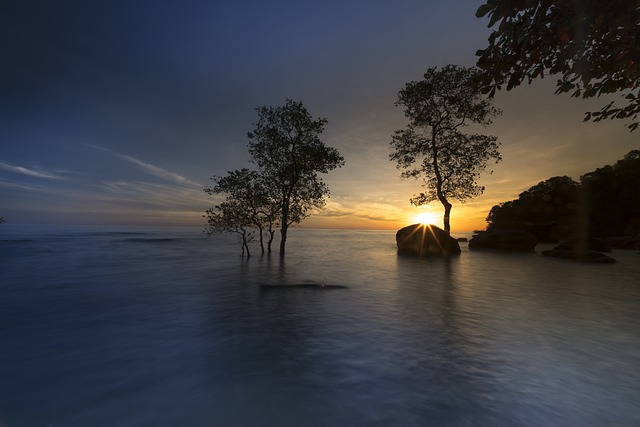
Vietnam, with its extensive coastline, offers a wide range of beach activities. Generally, the best time to hit the beaches in Vietnam varies depending on the region. In the south, the dry season from November to April is ideal for beach activities. During this time, you can expect plenty of sunshine and warm temperatures in coastal cities like Nha Trang and Phu Quoc.
In Central Vietnam, which includes popular beach destinations like Da Nang and Hoi An, the weather tends to be most favorable from February to July. Meanwhile, for northern coastal areas like Halong Bay, the period from March to June and October to December offers calmer waters and clearer skies.
What is the best time to visit Vietnam for hiking?
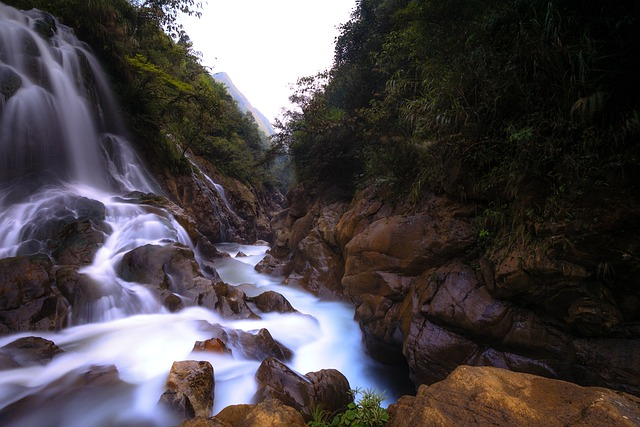
Vietnam’s diverse landscapes offer exceptional hiking opportunities. In the mountainous regions of North Vietnam, like Sapa, the best times to hike are the spring (March-May) and autumn (September-November) when the weather is mild and the landscapes are lush.
For Central Vietnam, particularly in areas like Bach Ma National Park, the dry season from January to August offers more favorable hiking conditions.
What is the best time to visit Vietnam for a motorbike trip?
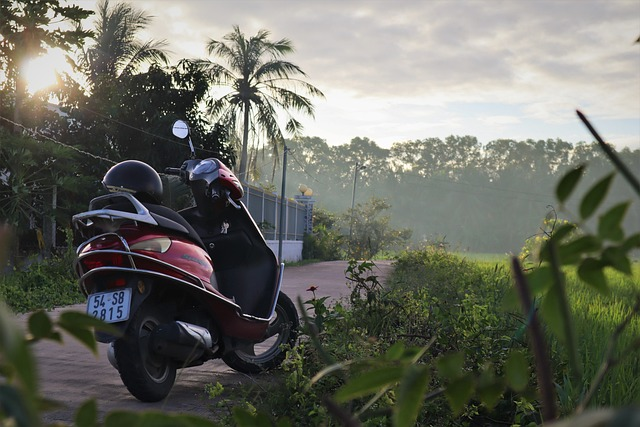
A motorbike trip across Vietnam can be an adventure of a lifetime. The best time for such a trip would be during the dry seasons. In North and Central Vietnam, this is typically from November to April, while in the South, the dry season extends from November to May. These periods are less likely to disrupt your journey with heavy rain. However, it’s always important to check the weather forecast and road conditions before setting off on your trip.
Are there 4 seasons in Vietnam?
Vietnam’s climate varies greatly from region to region. In the North, there are four distinct seasons: spring, summer, autumn, and winter. However, the South of Vietnam has a tropical climate, which typically features two seasons: a wet season and a dry season.
What month is hottest in Vietnam?
June, July, and August are typically the hottest months in Vietnam, with average temperatures ranging from 28°C (82°F) to 38°C (100°F) depending on the region. However, it’s important to note that regional climates can vary, with the South being consistently hot throughout the year, and the North experiencing cooler temperatures in winter.
How hot does it get in Vietnam?
In the peak of summer, temperatures in Vietnam can reach up to 38°C (100°F) or even higher, particularly in the central and southern regions. In the North, summer temperatures usually range from 28°C (82°F) to 35°C (95°F). Again, these are averages and temperatures can fluctuate based on specific locations and current weather conditions.
Does it get cold in Vietnam?
Yes, it can get quite cold in certain parts of Vietnam, particularly in the Northern highlands. In places like Sapa, temperatures in winter (December to February) can drop to around 10°C (50°F), and it can get even colder at night. Frost and occasional snow are also reported in these regions. However, in Central and South Vietnam, the weather remains relatively warm year-round.
Is there a typhoon season in Vietnam?
Yes, there is a typhoon season in Vietnam, which typically occurs during the rainy or monsoon season. Vietnam, particularly the central and northern coastal regions, is susceptible to typhoons.
Typhoon season in Vietnam usually starts in May and ends in November, with the peak period being from August to October. During this time, the country can experience several typhoons, which can cause heavy rainfall, high winds, and severe sea conditions.
It’s crucial to keep an eye on the weather forecast during this season, particularly if you plan to visit coastal areas or embark on sea-related activities. While the local authorities are usually well-prepared for typhoons, these weather events can cause disruptions to travel plans, including road closures, flight cancellations, and temporary closure of tourist attractions.
However, don’t let this deter you from visiting Vietnam. With adequate preparation and flexibility in your travel plans, you can still have an enjoyable experience in this beautiful country.
What is the Average Temperature during the Summer in Vietnam?
The average summer temperature in Vietnam can vary greatly depending on the region due to the country’s length and diverse geography. However, here are some general guidelines:
In Northern Vietnam, including cities like Hanoi, the summer months (June-August) typically see temperatures ranging from 28°C (82°F) to 35°C (95°F).
In Central Vietnam, which includes cities like Hue and Da Nang, summer temperatures can be quite high, often reaching up to 35°C (95°F), and sometimes even higher.
Southern Vietnam, including areas like Ho Chi Minh City, maintains a more consistent temperature year-round. Here, during the summer months, temperatures usually hover around 30°C (86°F) to 35°C (95°F).
It’s worth noting that these are average temperatures and can fluctuate. Summer in Vietnam is also characterized by high humidity, which can make the heat feel more intense. Always stay hydrated and protect yourself from the sun when traveling during these months.
What is the rainiest month in Vietnam?
The rainiest month in Vietnam can vary depending on the region due to the country’s diverse climate:
In the North (Hanoi, Halong Bay), the rainiest months are typically July and August.
In Central Vietnam (Hue, Da Nang, Hoi An), heavy rains are more common from September to November, with October often being the peak of the rainy season.
In the South (Ho Chi Minh City, Mekong Delta), May to November is generally the rainy season, with the rainiest months usually being June, July, and August.
Where to go in Vietnam in the rainy season?
Even during the rainy season, there are places in Vietnam that can be enjoyed. Here are a few suggestions:
Museums and Indoor Attractions: Cities like Hanoi and Ho Chi Minh City have numerous museums and indoor sites that you can visit during rainy days. These include the War Remnants Museum, the Vietnam Museum of Ethnology, and the Ho Chi Minh Mausoleum.
Spas and Wellness Centers: Vietnam is known for its affordable and excellent spas. Cities like Hoi An and Da Nang offer a range of wellness centers and spas where you can enjoy a relaxing day.
Culinary Experiences: One of the best ways to experience Vietnam during the rainy season is through its cuisine. Participate in a cooking class, enjoy a food tour, or simply explore the local markets and street food stalls.
Remember, the rainy season often means showers that come and go rather than constant rain, so with a bit of planning, you can still enjoy the beauty of Vietnam during this time.
